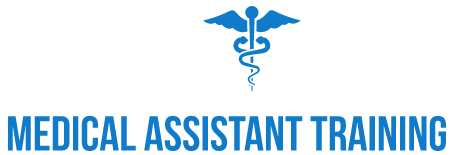Medical Assistant Income: A Financial Research Data Overview
 Medical assisting offers stable employment and competitive pay. This career remains a robust choice within the healthcare sector, offering both stable employment and competitive compensation. According to the Bureau of Labor Statistics (BLS) data for 2024, medical assistants income has been earned as median annual salary of $44,200, equivalent to $21.25 per hour. This salary reflects the critical role medical assistants play in supporting healthcare delivery, making it an attractive option for those seeking financial stability in a rewarding field.
Medical assisting offers stable employment and competitive pay. This career remains a robust choice within the healthcare sector, offering both stable employment and competitive compensation. According to the Bureau of Labor Statistics (BLS) data for 2024, medical assistants income has been earned as median annual salary of $44,200, equivalent to $21.25 per hour. This salary reflects the critical role medical assistants play in supporting healthcare delivery, making it an attractive option for those seeking financial stability in a rewarding field.
Strong Career Outlook
The job market for medical assistants is exceptionally promising, with a projected growth rate of 15% from 2023 to 2033, far surpassing the average for other occupations. This growth is expected to generate approximately 119,800 job openings each year, with an additional 118,000 new positions created over the decade. Such expansion provides ample opportunities for both newcomers and those looking to advance within the profession.
Earnings Potential and Variability
Income for medical assistants varies widely, offering significant potential for financial growth. According to BLS data, earnings range from $33,500 at the 10th percentile to $56,480 at the 90th percentile. This broad spectrum highlights the opportunity for medical assistants to increase their earnings over time through experience, specialization, and strategic career choices.
Impact of Geographic Location
Geographic location significantly influences a medical assistant’s earning potential. Higher-cost regions, particularly urban areas, typically offer higher wages compared to rural settings. However, rural positions may come with unique benefits, such as loan repayment programs, which can enhance the overall compensation package and make these roles appealing despite lower base salaries.
Role of Education and Certification
Education and professional credentials play a pivotal role in determining income levels. Medical assistants with certifications consistently earn more than their non-certified counterparts. Similarly, those with formal postsecondary education, such as certificates or associate degrees, often secure higher starting salaries compared to those trained solely on the job, underscoring the value of investing in education.
Experience and Specialization Benefits
Experience and specialization are key drivers of income growth in medical assisting. Entry-level positions typically start at the lower end of the pay scale, but salaries increase steadily with years of experience. Specializing in high-demand clinical areas, such as cardiology or dermatology, can further boost earnings, providing a clear path to financial advancement.
Influence of Employment Settings
The type of workplace significantly affects compensation structures. Larger healthcare organizations and hospitals generally offer higher base salaries than smaller private practices. Specialized clinics, particularly in fields like cardiology or dermatology, often provide premium pay. Additionally, comprehensive benefits packages, including health insurance and retirement plans, add substantial value to overall compensation, even if not reflected in base salary figures.
Diverse Workplace Opportunities
Medical assistants benefit from a wide range of employment settings, including physicians’ offices, hospitals, outpatient centers, specialized clinics, nursing homes, urgent care facilities, diagnostic laboratories, public health departments, and rehabilitation centers. This diversity allows professionals to choose work environments that align with their personal preferences, career goals, and financial aspirations.
Training Programs for Aspiring Medical Assistants
For those interested in pursuing a career in medical assisting, several reputable institutions offer high-quality training programs. Notable options include South University’s Online Associate of Science in Medical Assisting, ECPI University’s Medical Assisting Associate’s program, and Ultimate Medical Academy’s specialized medical assistant curricula. These programs provide a strong foundation for entering and succeeding in the field.
Pathways for Career Advancement
Beyond immediate financial rewards, medical assisting offers significant opportunities for long-term career growth. Many professionals use this role as a stepping stone to advance into specialized positions, supervisory roles, or further education in fields like nursing or other medical professions. These pathways can substantially enhance earning potential and open doors to diverse opportunities within the healthcare industry.
Latest Salary Statistics (2024-2025)
Bureau of Labor Statistics (BLS) Data
- 2024 Median Pay: $44,200 per year / $21.25 per hour
- Number of Jobs (2023): 783,900
- Job Outlook (2023-33): 15% growth (Much faster than average)
- Projected Job Openings: 119,800 openings per year on average
- Employment Change (2023-33): 118,000 new jobs
Percentile Wage Estimates (BLS)
- 10th percentile: $33,500
- 25th percentile: $36,780
- 50th percentile (median): $42,000
- 75th percentile: $47,220
- 90th percentile: $56,480
Factors Affecting Medical Assistant Income
-
Geographic Location
- States with higher cost of living typically offer higher wages
- Urban areas generally pay more than rural locations
- Rural areas may offer additional benefits or loan repayment incentives
-
Education and Certifications
- Medical assistants with certifications often earn more
- Postsecondary education (certificate or associate degree) can increase earning potential
- Continuing education can lead to higher-paying roles
-
Experience and Specialization
- Entry-level positions start at lower end of pay scale
- Salaries increase with years of experience
- Specialization in high-demand areas can lead to higher earnings
-
Employer Type
- Larger healthcare organizations and hospitals often pay more than smaller practices
- Specialized clinics may offer higher compensation
- Benefits packages can enhance overall compensation
Career Advancement Opportunities
- Medical assisting serves as foundation for advancing in healthcare
- Pathways to specialized roles, supervisory positions
- Opportunity for further education in nursing or other medical professions
Work Settings for Medical Assistants
- Physicians’ offices
- Hospitals
- Outpatient care centers
- Offices of other health practitioners
- Ambulatory surgical centers
- Nursing homes
- Urgent care clinics
- Diagnostic laboratories
- Public health departments
- Rehabilitation centers
Educational Requirements
- Typically need postsecondary education (certificate or associate degree)
- Some enter with high school diploma and learn through on-the-job training
- No work experience in related occupation typically required
- No on-the-job training typically required
Reputable Training Institutions
- South University – Online Associate of Science in Medical Assisting
- ECPI University – Northern Virginia (Manassas, VA) – Medical Assisting Associate’s
- Ultimate Medical Academy – Medical Assistant programs
